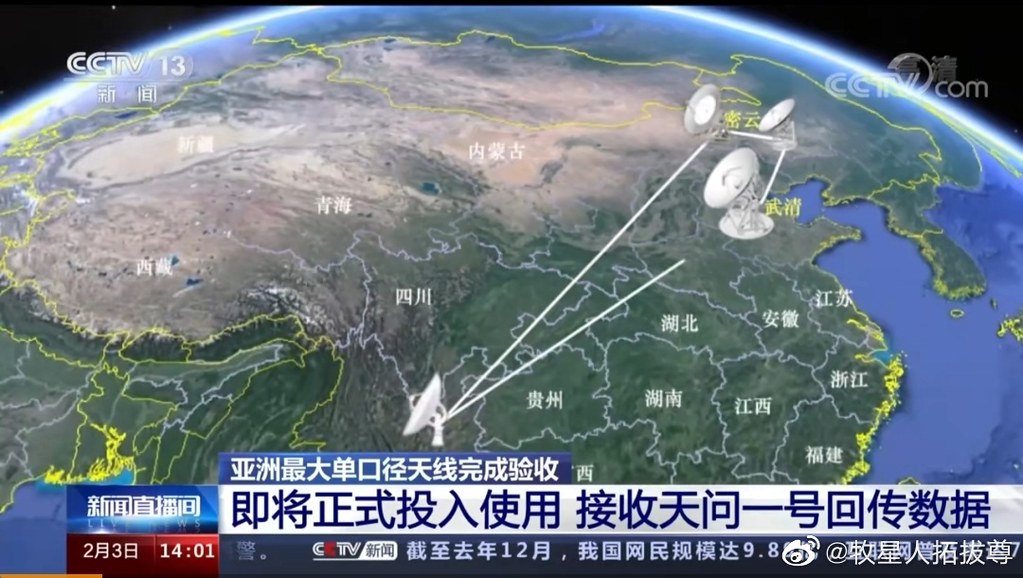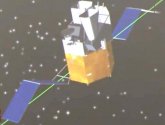You are using an out of date browser. It may not display this or other websites correctly.
You should upgrade or use an alternative browser.
You should upgrade or use an alternative browser.
China's Space Program News Thread
- Thread starter crazyinsane105
- Start date
- Status
- Not open for further replies.
Out of those ten I say is by a wide margin the best name.
Historically it was the mount of Lv Bu and in ROTK, that of Guan Yu after Lv Bu’s death. I approve.
The rumor is that this is an infrared ICBM early warning satellite.
Heres a link tracking China's deep space tracking development.in English.My apologies to B78 and Quickie if they had posted it before.A 70-meter diameter deep-space communications dish just came online in Tianjin. It will be used for the Tianwen-1 mission. As I said before, if you're truly serious about deep-space exploration and space science, as opposed to publicity stunts, then you have to have your own deep space communications network.





Five more days till it enters orbit if all goes according to plan!
Hendrik_2000
Lieutenant General
Yup it could be here is Nasa take on the subjectThe rumor is that this is an infrared ICBM early warning satellite.
Chinese Long March 3B launches Tongxin Jishu Shiyan Weixing (TJSW)
written by February 4, 2021China launched another secretive Tongxin Jishu Shiyan Weixing (TJSW) satellite on 4 February. The launch took place at 15:36 UTC using the Chang Zheng-3B/G2 (known as the Long March 3B/G2 outside of China) launch vehicle from launch site LC3 at the Xichang Satellite Launch Center.
Originally, it was reported the launch would orbit a satellite on the Tianhui series and carrying a Synthetic Aperture Radar, or SAR, antenna to geosynchronous orbit. But a few hours before the launch, reports changed to indicate that the cargo onboard would be another experimental communications system on the TJSW series.
Official Chinese media outlets report the satellite will mainly be “used for satellite communications, radio and television, data transmission and other services, and carry out related technical test verification.”
TJSW launch history
When TJSW-1 launched on 12 September 2015, Chinese authorities said the new satellite was a geostationary communications technology demonstration to mainly test Ka-band (27 and 40 GHz) frequency use for broadband.
Previous to the launch of TJSW-1, Japan’s Kyodo News reported that China was building a missile defense system to detect a ballistic missile attack. The report was based on Chinese military documents that referred to the development of an experimental early warning satellite program similar to the American Space-Based Infra-Red Sensor satellites.
Additionally, the report pointed out that China had started the development of an X-band radar system as part of a ground-based interceptor system.
Eventually, TJSW-1 was placed in geostationary orbit and no other information was revealed. Later, it was revealed the satellite had successfully deployed China’s first large-aperture reflector antenna in orbit. Therefore, TJSW-1 was possibly the first vehicle in the Qianshao-3 SIGINT satellite series developed by the China Academy of Spaceflight Technology (CAST).
The same secrecy surrounded the launch of TJSW-2 and -3 on on 5 January 2017 and 24 December 2018, respectively. The lack of information and nature of the launch preparations, with only marginal references to the payload, point to the secretive nature of the TJSW-2 satellite possibly being the first Huoyan-1 developed by the Shanghai Academy of Spaceflight Technology and possibly based on the SAST-5000 satellite bus.
The information blackout for TJSW-3 led to the same rumors, implying the satellite might be a military SIGINT or early warning satellite. Reportedly, the satellite was built on the SAST-5000 all-electric bus and featured a multi-frequency and high-speed communications payload.
Once again, the same secrecy surrounded the launch of TJSW-4 on 17 October 2019. The satellite was built by CAST and referred to as a technological demonstration of multi-band, high-speed communication techniques. In 2008, there was a paper published about the early design of the TJS-4 antenna that was designated having a 200MHz-800MHz range for the 4 element log-periodic array and a 800MHz-2.5Ghz for another array of 5 elements in the middle of the previous. The purpose of the satellite was stated as “collecting ground wave signals and locating source targets.”
TJSW-5, launched on 7 January 2020, could be very similar to the TJSW-4, in that it could be the second satellite of the Huoyan-1 series.
escobar
Brigadier
- Status
- Not open for further replies.



